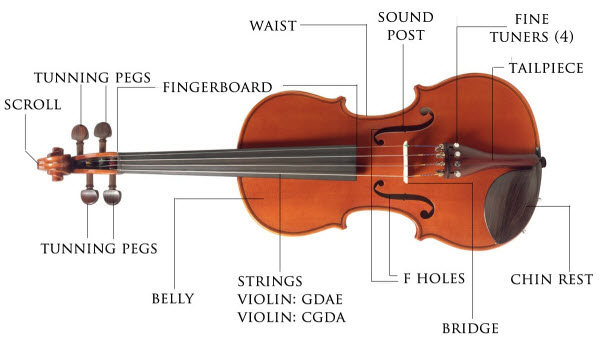Topics Map > Sample Documents
Sample Doc: IncludeDoc - Violin Parts
The body of a violin must be strong enough to support the tension from the strings, but also light and thin enough to vibrate properly. The body of a violin consists of two arched wooden plates as top and bottom of a box, whose sides are formed by thin curved wooden "ribs." The ribs are reinforced at their edges with lining strips, which provide extra gluing surface where the plates are attached. Animal hide glue is used to fasten the parts together, since it is capable of making tightly fitted joints which do not damp vibrations nor add reflective discontinuities to the vibrating structure.
An internal sound post helps transmit sound to the back of the violin and serves as structural support.
The body of the violin acts as a "sound box" to couple the vibration of strings to the surrounding air, making it audible. The construction of this sound box, and especially the arching of the top and back, have a profound effect on the overall sound quality of the instrument. The sound-producing system of the violin body includes the top and back (and to some degree the sides, or ribs), the bass bar that is glued to the underside of the top, and the bridge and sound post. In addition to the resonant modes of the body structure, the enclosed air volume exhibits Helmholtz resonance modes.


